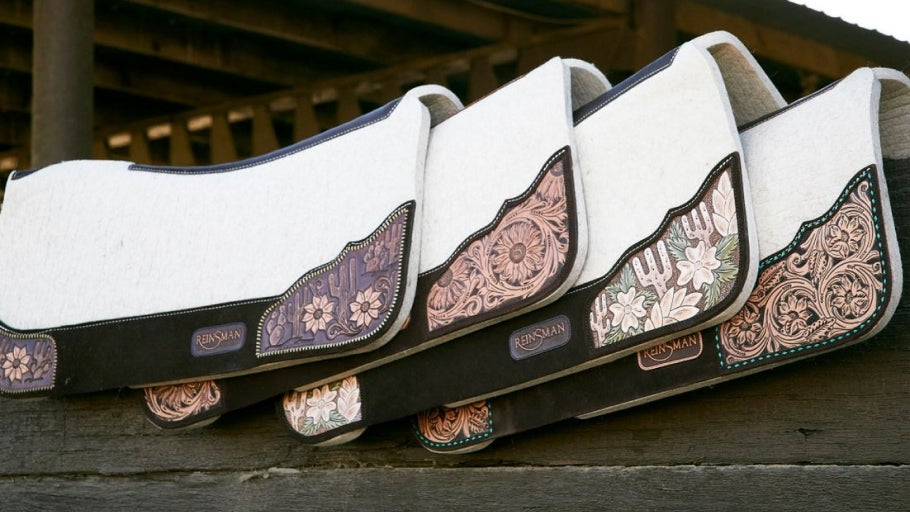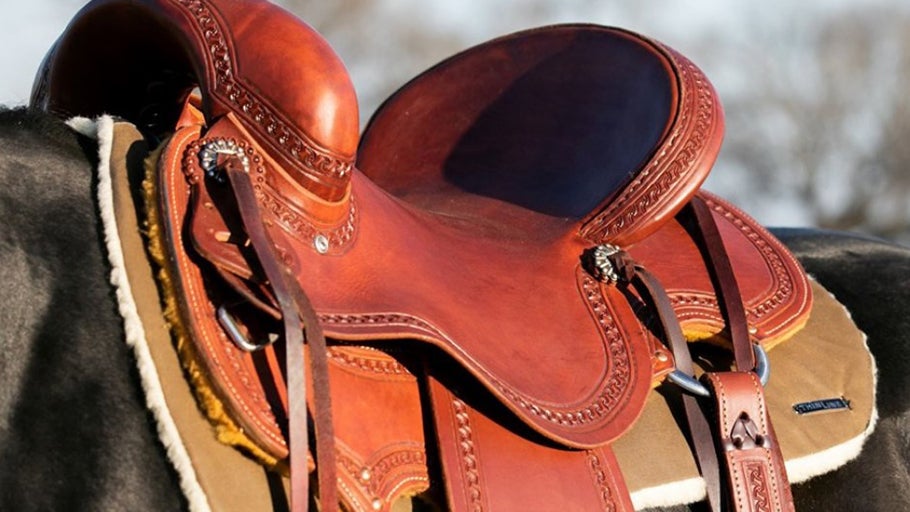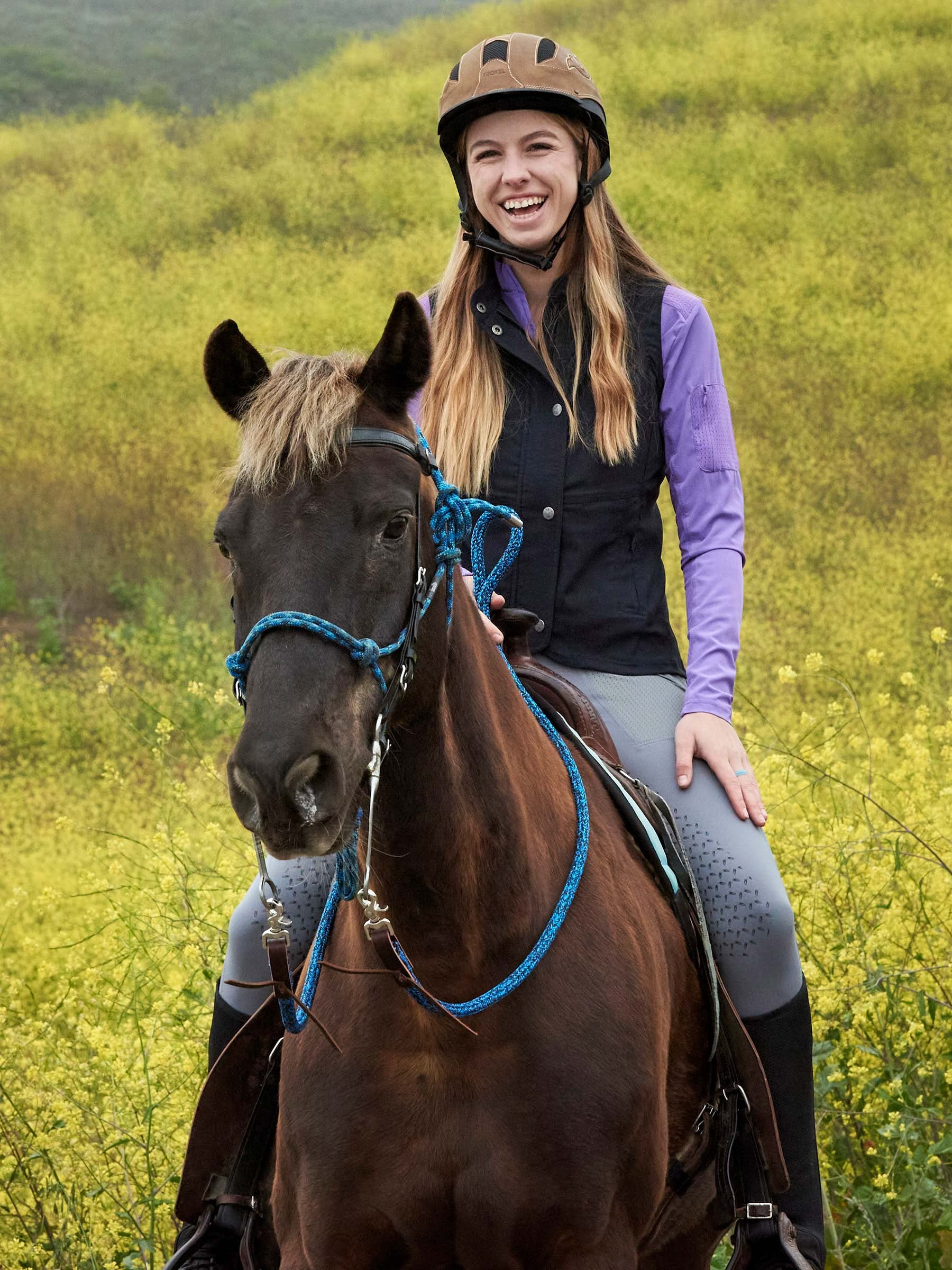
How to Measure a Saddle
The saddle is a key piece of tack—arguably the most important; it allows a rider to remain upright and communicate with their horse through seat and leg aids. As a result, a saddle that is correctly fitted to both the horse and rider is absolutely essential. Horse owners will benefit from a saddle that is comfortable for them and their equine because it lessens the possibility of issues for each party involved.
With such a wide variety of saddles on the market today (at vastly different price points), it can easily become overwhelming to sift through all the information—especially if you are a first-time saddle shopper. For those new to picking saddles, we do recommend consulting a professional saddle fitter or two for their assistance.
While we are not going to be delving into every aspect of saddle fitting in this article, we will address the basics of how to measure a saddle in general. When you see a saddle you are interested in purchasing, or you need to measure a saddle you intend on selling, you will at least understand where the measurements came from!
Getting Started
We will be covering saddle measurements for the following types of saddles: Close Contact/All-Purpose, Dressage, Western, and Endurance. Before we dive in, let's make certain we are on the same page about common saddle parts and where they apply to English and Western saddles. We will be using this terminology throughout the guide.
We suggest using a soft measuring tape to measure your saddle, as it follows the curvatures better and mitigates the likelihood of scratching your saddle. In some cases, it is easier to use a metal ruler for certain saddle measurements that necessitate rigidity. We suggest you place your saddle on a saddle stand that is approximately the width of a horse's barrel to help get the truest measurements. Finally, you can choose to remove your stirrups and attachments so they are out of the way while measuring.
How to Measure English Style Saddles
Close Contact & All-Purpose Saddles
Although different, Close Contact and All-Purpose saddles are measured similarly, so we have included them together here. Below, we describe each of the basic measurements and how to take them correctly:
- Seat Size - The saddle seat needs to be sufficiently large to comfortably accommodate your buttocks and upper thighs; however, a too-large seat is problematic because you will feel less secure. To measure your saddle seat, start at the middle of the pommel button and go toward the middle of the cantle. This semi-diagonal measurement is the seat size of your saddle.
- Flap Length - Place your measuring tape at the top of the stirrup bar, where a stirrup leather would hang. Measure down to the bottom of the saddle flap's longest point.
- Flap Width - Place your measuring tape at the front of the saddle flap where the flap is most far forward. Measure to the back of the flap at its widest point.
- Gullet Width - The gullet width is the length measured between the two "dots" on the inside of the panels.
- Panel Length - Take this measurement from the forwardmost point on the panel underside, then follow the curvature to the furthest back point of the panel. This is the length that will be in contact with your horse's back, which helps gauge lumbar interference and determine saddle pad size.
Dressage Saddles
Similar to Close Contact and All-Purpose saddles, Dressage saddles have several key measurements as well:
- Seat Size - The saddle seat needs to be sufficiently large to comfortably accommodate your buttocks and upper thighs; however, a too-large seat is problematic because you will feel less secure. To measure your saddle seat, start at the middle of the pommel button and go toward the middle of the cantle. This semi-diagonal measurement is the seat size of your saddle.
- Flap Length - Place your measuring tape at the top of the stirrup bar, where a stirrup leather would hang. Measure down to the bottom of the saddle flap's longest point.
- Flap Width - Place your measuring tape at the front of the saddle flap where the flap is most far forward. Measure to the back of the flap at its widest point.
- Gullet Width - The gullet width is the length measured between the two "dots" on the inside of the panels.
- Panel Length - Take this measurement from the forwardmost point on the panel underside, then follow the curvature to the furthest back point of the panel. This is the length that will be in contact with your horse's back, which helps gauge lumbar interference and determine saddle pad size.
How to Measure Western Style Saddles
Measuring Western saddles is fairly straightforward and consistent amongst the varying styles. If you are unsure about what style of Western Saddle to purchase, check out our complete guide to Western Saddles. Below are the most common measurements needed when sizing a Western Saddle:
- Seat Size - The seat of a Western Saddle is measured from the top of the cantle (at the stitching), where the leather and seat material are attached together, to the top of the pommel just under the horn.
- Horn Post & Cap - To measure the post of your saddle's horn, measure from the bottom of the horn to where the cap begins. To measure the cap, simply measure from one side to the other of the horn cap.
- Skirt Length (Front to Back) - To measure the skirt length, measure from the very back to the very front of the skirt.
- Skirt Drop (Center to Bottom) - Measure from the midpoint of the skirt at the top of the saddle down to the bottom of the skirt.
- Fender Length - The fender is measured from the topmost attachment point up under the skirt, then down to the longest point either to the end of the fender flap, or at the point where the fender meets the stirrup.
- Gullet Width - The gullet width is the length measured between the two screws on the inside of the panels. Otherwise, it's measured between the conchos right below the horn post.
- Panel Length - Take this measurement from the forwardmost point on the panel underside, then follow the curvature to the furthest back point of the panel. This is the length that will be in contact with your horse's back, which helps gauge lumbar interference and determine saddle pad size.
How to Measure Endurance Style Saddles
There tends to be a broader range of what is considered an Endurance saddle, as trail riders can commonly be seen in English or Western-specific saddles. However, there are some specialized Endurance saddle brands and types. Endurance saddles are essentially designed to be lightweight for the horse and comfortable for the rider in order to improve performance during long hours in the saddle. Depending on whether you have an English trail or Western trail saddle, follow the same saddle measuring steps depicted in our other sections.
In this section, we will address how to measure an Australian saddle, an English/Western saddle hybrid that originated from Australian ranchers.
- Seat Size - To determine the seat size (or length), measure from the forepart (raised section between pommel and facing) to the inside back of the seat (or cantle).
- Seat Depth (or Dip) - The seat depth is the measurement of how deep the seat sits relative to the pommel and seat back (cantle). For this measurement, you will need a metal measuring tape and a ruler. Use a metal measuring tape to create a line from the top of the pommel to the seat back, similar to the way you measured the seat size above. Now take your ruler and measure straight down from the measuring tape to the deepest part of the seat. This measurement gives you your saddle's seat depth.
- Knee Pad Height - Measure from the saddle flap to the highest point on the knee pad.
- Thigh Pad Height - Similarly, measure from the saddle flap to the highest point on the thigh pad.
- Flap/Fender Length - Measure from the stirrup bar or top of fender attachment to the bottom of the flap or fender.
- Gullet Width - The gullet width is the length measured between the two "dots" on the inside of the panels. Otherwise, it's measured between the outer "dots."
- Panel Length - Take this measurement from the forwardmost point on the panel underside, then follow the curvature to the furthest back point of the panel. This is the length that will be in contact with your horse's back, which helps gauge lumbar interference and determine saddle pad size.
Frequently Asked Questions
What are common issues with saddles that don't fit right?
Equestrians will know pretty quickly if a saddle does not fit because the rider or horse will experience discomfort (either immediately or over time). Some common issues that pop up for the rider due to an ill-fitting saddle include back and hip pain, sores, unbalanced riding, chafing, a chair seat position, and more. Your horse may experience sores, pinching, swelling, lameness, white hairs, physical or behavioral changes, and more due to an ill-fitting saddle. We highly recommend taking the time to research saddle function, as well as how a saddle should fit a horse. The better educated you are, the better equipped you will be to help your horse feel their best!
How do you tell if a saddle is too wide or narrow?
A saddle that is too wide will not have ample wither clearance and fall forward onto your horse's shoulders or spine. A saddle that is too narrow places intense pressure on the withers and is highly likely to pinch due to uneven saddle contact on the horse's back, typically caused by bridging. An important factor to consider when determining whether your saddle is too wide or narrow is matching the angle of the saddle panel to your horse's shoulder angle. If these angles are not parallel to one another, the shoulders will be inhibited and unable to slide under the saddle panel for proper forward motion.
How should a proper saddle seat fit?
A saddle seat that fits properly should put the rider in a comfortably balanced position in the center of the saddle. They should be aligned in a straight line from the shoulder, through the hip, and to the heels. A seat that is too large will put the rider back onto the cantle, while a seat that is too small forces the rider forward onto the pommel. Depending on your discipline, you might feel more comfortable and secure in a slightly smaller or larger seat.
What if I can't find a saddle that fits perfectly?
It is practically impossible to find a saddle that perfectly fits your horse, especially because your horse's body conformation will change over time due to age and muscling. If you do not have the necessary resources or budget to try several saddles, work with the saddle you currently have. Should you determine that your existing saddle doesn't fit, do not try to "make it work." Band-Aid solutions like using a different saddle pad can only go so far; if the saddle does not fit, it simply does not fit. The effects of an ill-fitting saddle will be detrimental to your horse, especially over time. Find another saddle to suit your riding needs out of respect for your horse's back—they will thank you for it. We understand that the process can be frustrating and costly, but we promise it's worth it!
Closing Thoughts
We know how that a saddle is a major investment, and we hope our measuring guide has helped you feel more prepared to navigate the world of saddle fitting. Whether you are looking to buy or sell a saddle, knowing the measurements ahead of time can be very helpful in determining fit for the rider and horse. Should you have any lingering questions regarding saddles, we will do our best to help you find the information you need! Feel free to contact us at 1-800-620-9145 or info@ridingwarehouse.com to speak with our friendly customer service team.





























